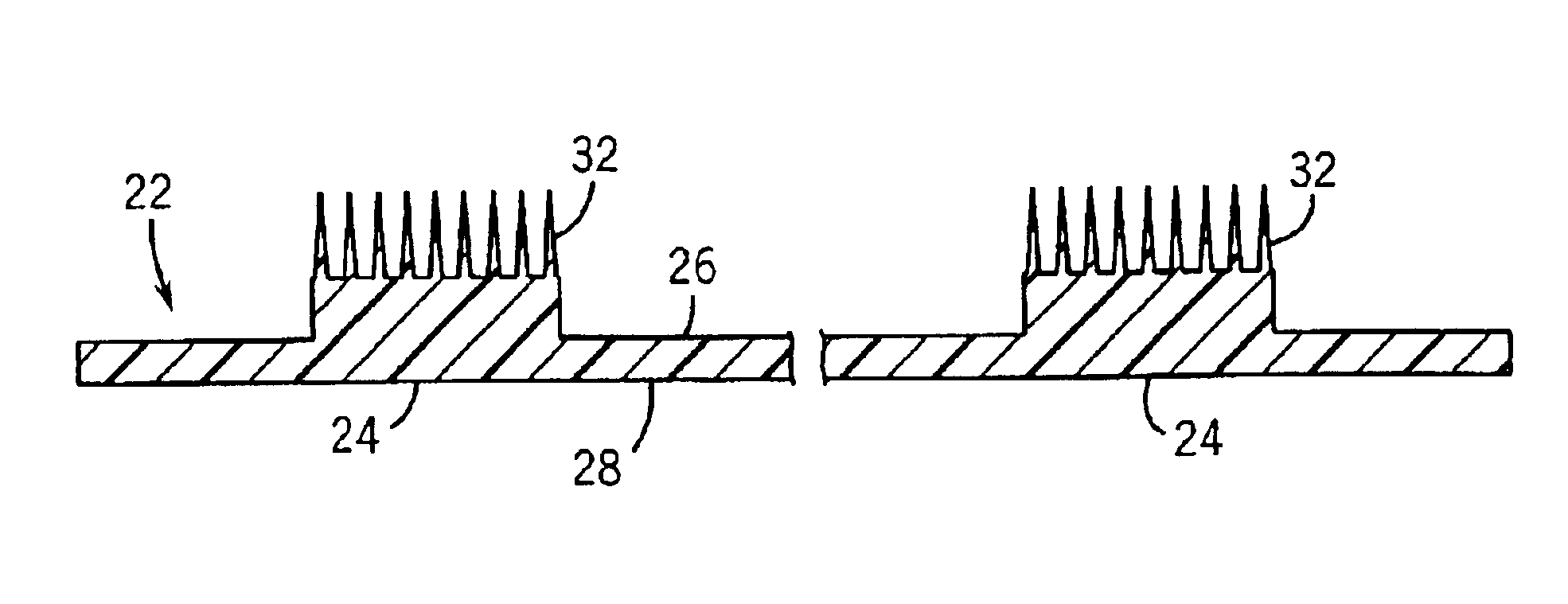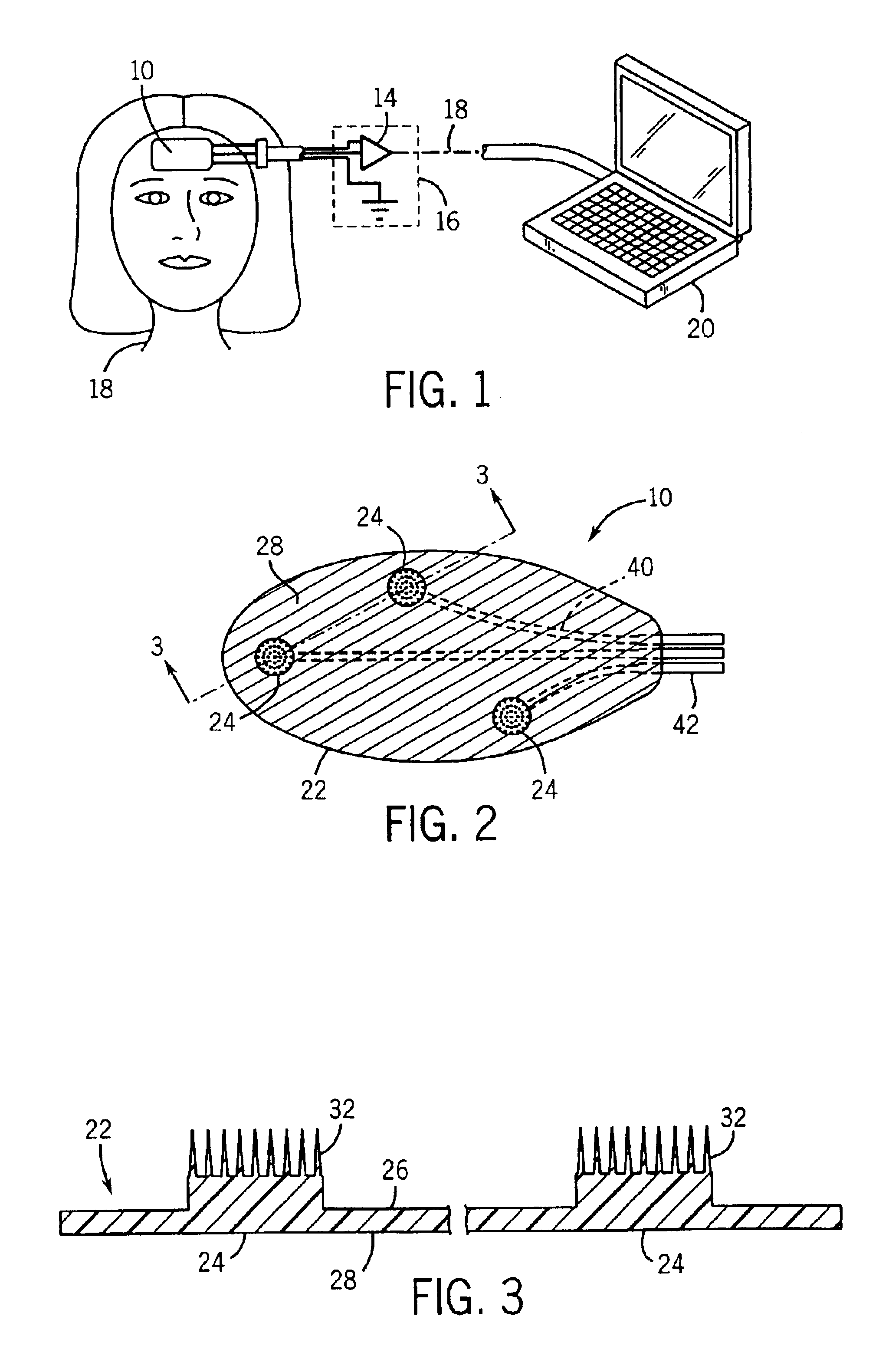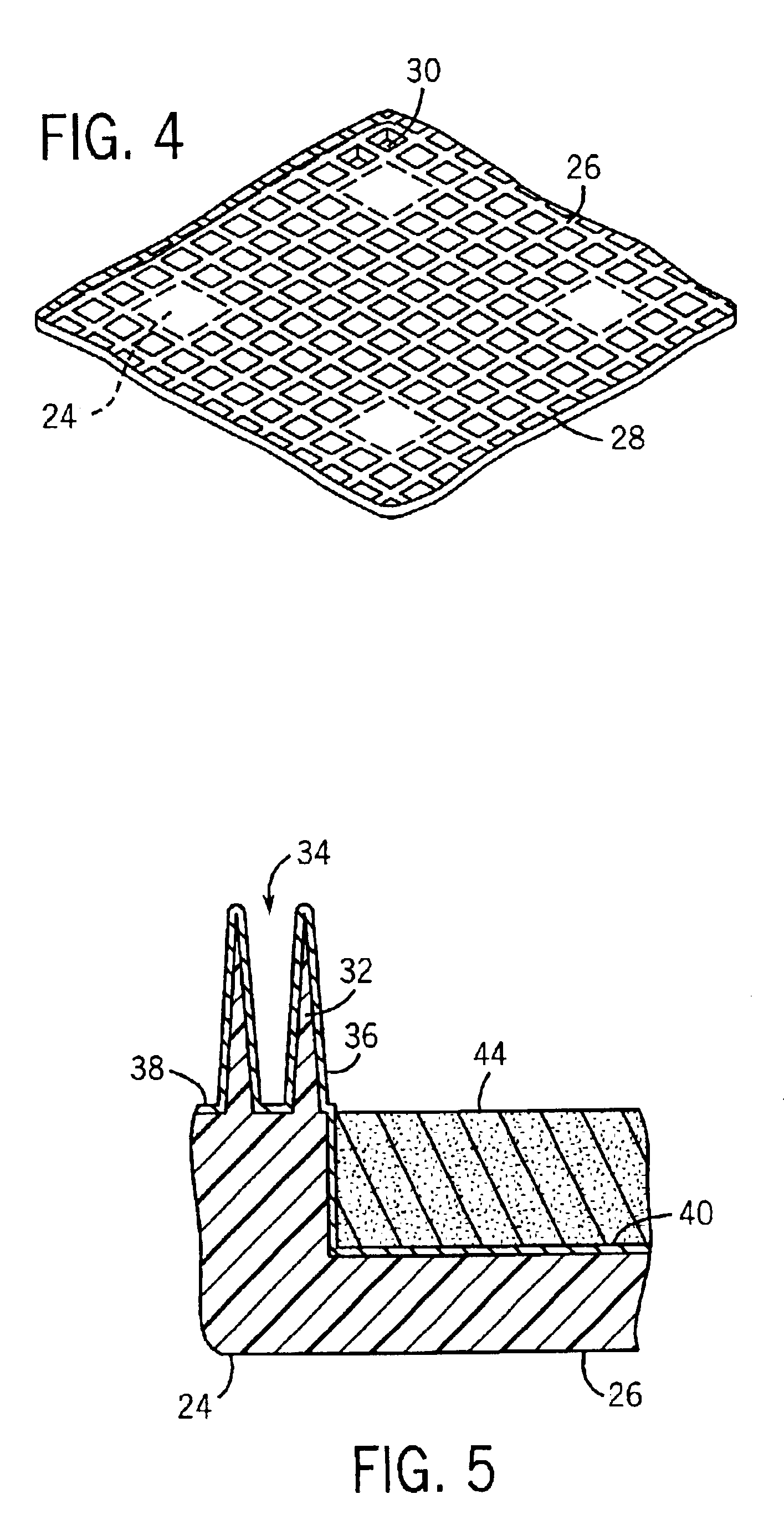Unitary multi-electrode biopotential signal sensor and method for making same
- Summary
- Abstract
- Description
- Claims
- Application Information
AI Technical Summary
Benefits of technology
Problems solved by technology
Method used
Image
Examples
Embodiment Construction
[0018]FIG. 1 shows unitary, multi-electrode sensor 10 of the present invention applied to the forehead of a subject, such as patient 12. The sensor has three electrodes to provide a single channel of electroencephalographic (EEG) signal data, to differential amplifier 14 in signal processing circuit 16. The output of circuit 16 is connected via cable 18 to a computer 20 or other device for processing the signal data. For example, signal processing of the type described in published PCT patent application WO 02 / 32305, may be carried out to obtain an indication of the depth of anesthesia that patient 12 is experiencing. If an additional channel, or channels, of EEG signal data is / are required, additional sensors 10 may be applied to the forehead or scalp of patient 12. Or, a single sensor 10 may incorporate a further number of electrodes to provide the desired signal data.
[0019]Sensor 10 is formed as a unitary element of an injected molded plastic material, such as polycarbonate plast...
PUM
 Login to View More
Login to View More Abstract
Description
Claims
Application Information
 Login to View More
Login to View More - R&D
- Intellectual Property
- Life Sciences
- Materials
- Tech Scout
- Unparalleled Data Quality
- Higher Quality Content
- 60% Fewer Hallucinations
Browse by: Latest US Patents, China's latest patents, Technical Efficacy Thesaurus, Application Domain, Technology Topic, Popular Technical Reports.
© 2025 PatSnap. All rights reserved.Legal|Privacy policy|Modern Slavery Act Transparency Statement|Sitemap|About US| Contact US: help@patsnap.com



